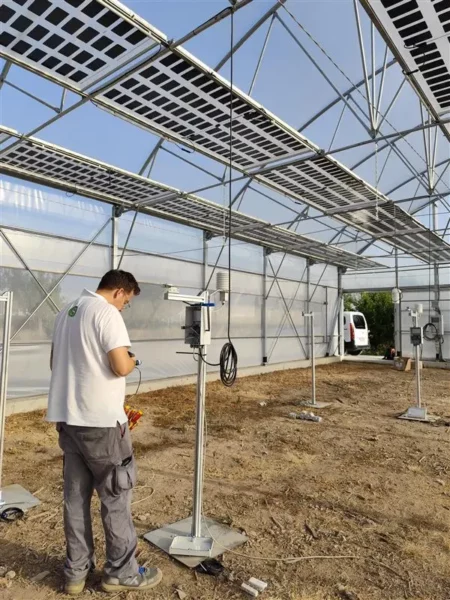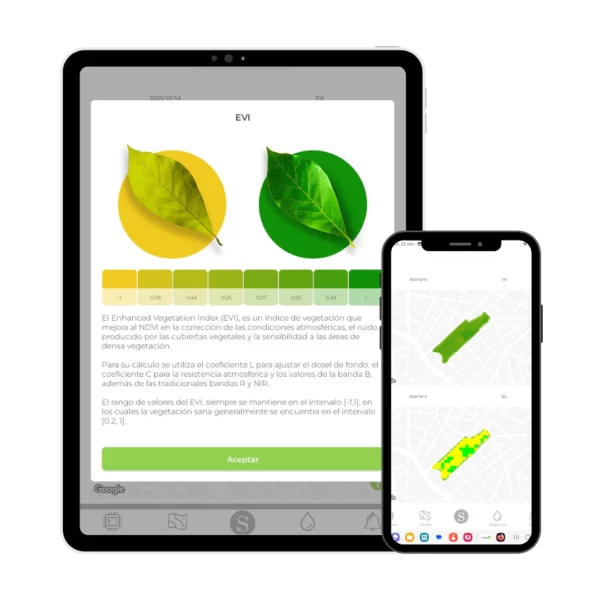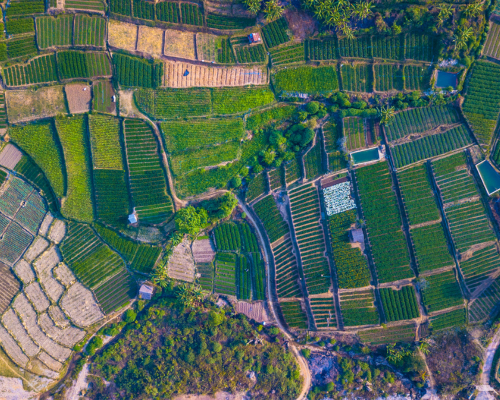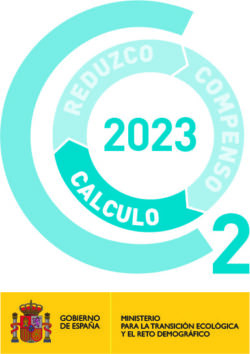Agricultural irrigation planning is one of the most crucial factors in ensuring healthy, productive, and sustainable crops. Good water management not only improves yields, it also reduces costs and prevents the waste of an increasingly scarce resource.
For years, irrigation has relied on farmers’ intuition. But today, thanks to technology, we can make much more precise decisions. From moisture sensors to artificial intelligence, digital tools are transforming the way we understand and apply irrigation.
If you’re looking for ways to optimize your farm or operation, here are 10 practical tips to improve agricultural irrigation planning, combining experience, data, and technology.
Planning agricultural irrigation according to crop needs
Each plant has its own water needs. Watering flowering almond trees is not the same as watering a young lettuce plantation. Understanding your crop’s needs based on its growth stage, soil type, and local climate is the first step to good planning.
The common mistake is to apply the same irrigation schedule to all crops or cycles, without adapting to changes. This is where efficiency begins: with specific information, not general rules.
Planning agricultural irrigation taking into account the type of soil
The soil is just as important as the plant itself. Its water retention capacity, texture, and depth directly influence the amount and frequency of watering.
Sandy soils, for example, lose water more quickly, while clay soils retain it longer. If you know your soil well, you’ll know when to water and when not to, avoiding both water stress and waterlogging.
Additionally, you can rely on moisture sensors to provide real-time data on soil conditions, taking your agricultural irrigation planning to the next level.
Choose the right system for your agricultural irrigation planning
The irrigation system you use makes a big difference. Drip irrigation is ideal for intensive or high-value crops; sprinklers can be useful for cereals or forage crops; and underground systems are gaining ground in precision agriculture.
Choosing wisely isn’t just a matter of budget, but also of goals and crop type. A well-made initial investment can result in considerable savings in the medium term.
Automate your agricultural irrigation planning
Watering “just because” is no longer enough. It’s time to abandon fixed schedules and adopt dynamic programming based on real needs: evapotranspiration, recent rainfall, temperature, or growing season.
Automated systems allow you to adjust irrigation based on data, opening and closing valves or changing durations without manual intervention. This way, each plant receives the water it needs, when it needs it.
Integrate meteorological data into your agricultural irrigation planning
Knowing what the weather will be like tomorrow or next week isn’t just a matter of curiosity: it can make a huge difference in water management. Integrating weather data into agricultural irrigation planning allows you to adapt each irrigation program to the weather, avoiding both unnecessary irrigation before a rainstorm and water stress during a heat wave.
There are multiple sources of meteorological information, such as local stations or cloud platforms, that offer increasingly accurate predictions. A good example is the European Commission’s Agri4cast , where you can consult agroclimatic models and detailed forecasts by region.
At OdinS, we facilitate this process through two types of solutions: virtual weather stations, which collect data from highly reliable official sources, and physical stations installed directly in the field or in greenhouses. The latter allow variables such as temperature, relative humidity, wind speed, solar radiation, and precipitation to be measured with precision tailored to the microclimatic conditions of each plot.
Having this real-time data significantly improves decision-making and increases the efficiency of any irrigation system. This makes every irrigation decision worthwhile.

Rely on sensors for more precise agricultural irrigation planning
One of the major advances in agricultural irrigation planning is the ability to stop guessing what’s happening underground. Today, thanks to soil sensors and probes, we can accurately understand the state of the soil and make informed decisions using data such as temperature, humidity, and conductivity.
These sensors can be installed at different depths, allowing moisture to be measured in different soil layers, from the first few centimeters to the deepest root profile. This is especially useful for crops with extensive roots or variable root systems throughout the cycle. Furthermore, on large farms or with variable terrain, sensors can be placed in several plots or sectors, adapting irrigation to each area based on its actual behavior.
No less important is the temporal dimension: sensors generate real-time, continuous data, allowing us to observe how soil moisture evolves after irrigation or rainfall. This dynamic helps adjust not only the frequency of irrigation, but also its duration and volume.
At OdinS, we integrate IoT sensors with our management platforms, offering farmers a clear view of soil conditions and the ability to manually or automatically irrigate based on updated data. This not only optimizes water use but also provides security: you know your crop is receiving what it needs, exactly when it needs it, without unnecessary waste or risk.
Use software to optimize agricultural irrigation planning
Today, there are platforms that centralize all information, such as OdinS’ WiCloudS platform . This platform allows you to view data collected by sensors (weather data, soil conditions, etc.), but also generates customized alerts, allows you to download data in .CSV format, view satellite images, and more!
This technology helps make better decisions, but also helps detect anomalies before they become a bigger problem.
Agricultural irrigation planning with satellite images
Do you want to see the status of your farm without leaving the office? Nowadays, it’s possible thanks to drones and satellites. These tools allow you to detect areas with water stress, visualize development differences between plots, and evaluate irrigation efficiency.
Furthermore, analyzing this data with vegetation indices such as the NDVI (Normalized Difference Vegetation Index) or the EVI (Enhanced Vegetation Index ) provides a clear representation of the plots. This allows for early detection of problem areas, even before symptoms are visible to the naked eye.
Integrating this information into agricultural irrigation planning gives you a comprehensive view of your crop, helps you make more accurate decisions, and allows you to respond quickly to any anomalies, optimizing water use and improving final yield.

Leverage artificial intelligence in agricultural irrigation planning
AI is revolutionizing agriculture. Algorithms are capable of analyzing thousands of data points and accurately predicting when and how much to irrigate. This translates into better decisions, fewer errors, and improved performance.
By incorporating artificial intelligence, your agricultural irrigation planning becomes predictive, not reactive. This makes all the difference when it comes to saving water and maximizing yield.
No plan is perfect from day one. The important thing is to observe, measure results, and adjust. The data is there to help you improve with each campaign.
Take the time to review whether irrigation is working as expected, whether there are areas of excess or deficit, and whether resources are being used efficiently. Continuous improvement is part of the process.
It’s not about making irrigation more complicated, but about making it smarter.
Do you want to transform your irrigation system with cutting-edge technology?
💬 Write to us and we’ll advise you without obligation to find the solution that best suits your crops.












